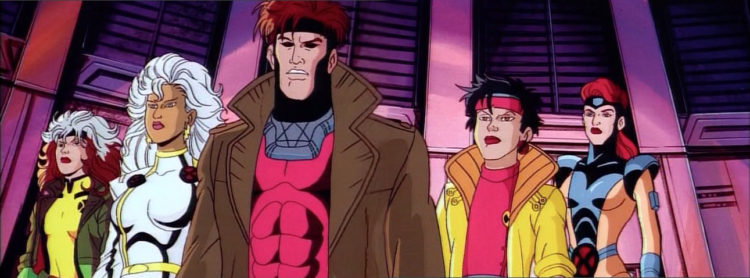
When it debuted on FOX Kids in 1993, X-Men was an immediate smash. It may not have been as big a cultural phenomenon as Mighty Morphin Power Rangers, but it was an undeniable hit. It is also, in my opinion, the most IMPORTANT Saturday morning cartoon in history. I’ll explain.
Even though X-Men was a top-selling comic book, it was the cartoon that made the characters household names and without the cartoon, I am convinced that 20th Century Fox would never have made an X-Men movie. If it hadn’t been for the X-Men movie, they probably would never have made a Spider-Man movie and all of the other superhero flicks that followed. So if you ask me, if it weren’t for the X-Men cartoon, there wouldn’t be a Marvel Cinematic Universe! Just imagine how different the pop culture landscape would be! Feel free to disagree, but I’m standing by that.
The X-Men had a long road to making it on the air. The X-Men comic book was first published by Marvel Comics in 1963 and was written by Stan Lee and drawn by Jack Kirby. This was the height of the civil rights movement, and Lee and Kirby used this all-white teen team as a way to address equality without… really doing so. (Sorry.) Unfortunately, X-Men was never a huge seller. It wasn’t until the team was reinvented in 1975 by writer Len Wein and artist Dave Cochrum that the book really took off. Wein quickly moved off the project and was replaced by Chris Claremont. It was under his pen that X-Men, with a new diverse cast including Storm, Colossus, Nightcrawler, and most famously Wolverine, became Marvel’s top-selling book.
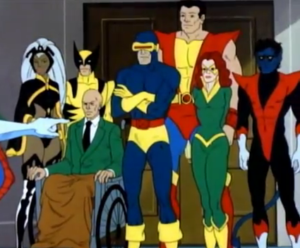
While the original X-Men had appeared in the 1960s Marvel Super Heroes cartoon series, the newer characters made their animation debut on Spider-Man and His Amazing Friends in 1982. That series was produced by Marvel Productions, which was later headed up by Margaret Loesch. Remember that name.
Various X-Men guest-starred on Spider-Man and His Amazing Friends. The 1983 episode “The X-Men Adventure” was meant to be a backdoor pilot for an actual X-Men cartoon series. Oddly, even though Wolverine, the most popular X-Man at that time, had appeared previously, he was absent from “The X-Men Adventure” replaced by the long-dead Thunderbird. (All episodes of Spider-Man and His Amazing Friends minus one are available on Disney+.)
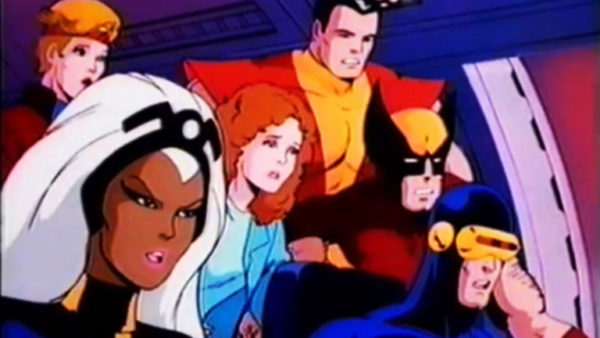
Margaret Loesch was determined to bring the X-Men to TV in their own series and in 1989, she greenlit the pilot “Pryde of the X-Men.” Unfortunately, no outlet picked it up. It did, however, spawn a popular arcade game. (“Pryde of the X-Men” is not available to stream but was released several times on VHS and I believe you can find it online.)
It should be noted that for whatever reason, on both Spider-Man and His Amazing Friends and “Pryde of the X-Men,” Wolverine, who is Canadian in the comics, was given an Australian accent.
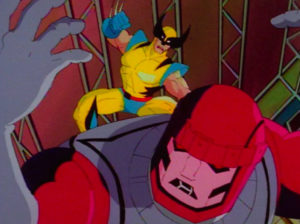
Then, in 1991, Loesch was made head of FOX Kids and one of her first orders of business was to order an X-Men animated series. The show was produced by Saban, which went on to deliver the hit Mighty Morphin Power Rangers. However, at this time, Saban could not create the show in-house and licensed it out to Graz Entertainment, which in turn handed the animation duties over to South Korean studio AKOM.
Woof. Bad move. AKOM really botched this job and the early episodes were riddled with animation problems. On top of that, they were late. FOX only aired two episodes of X-Men during its 1992 fall season and they were a mess. The series, with corrected animation, didn’t properly launch until spring 1993.
But despite the somewhat shoddy animation, X-Men was an immediate hit with kids.
The show had been developed by Eric Lewald, Sidney Iwanter, and Mark Edward Edens. Dan Hennessey served as voice director, and Ron Wasserman wrote the unforgettable theme song which is probably stuck in your head now.
Oddly enough, in 2019, a Hungarian immigrant Zoltan Krisko filed a lawsuit claiming the X-Men theme song plagiarized that of the 1984–91 Hungarian cop series Linda, which was composed by György Vukán. At the time that this was announced, I listened to the Linda theme song and… yeah, it sounds pretty damn similar!
Actually, you can listen to it yourself below:
Mmmm… hmmm.
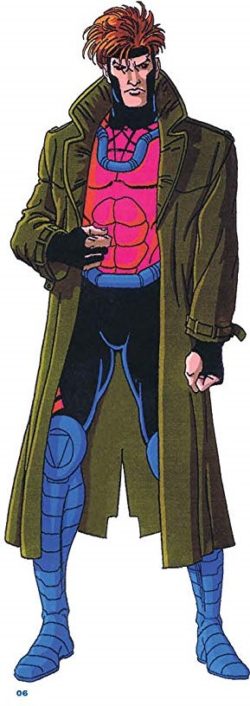
At any rate, the voice cast featured George Buza as Beast/Hank McCoy, Alyson Court as Jubilee/Jubilation Lee, Catherine Disher as Phoenix/Jean Grey, Cathal J. Dodd as Wolverine/Logan, Iona Morris as Storm/Ororo Munroe, Chris Potter as Gambit/Remy LeBeau, Cedric Smith as Professor Charles Xavier, Norm Spencer as Cyclops/Scott Summers, and Lenore Zann as Rogue/Anna Marie. Morris left after the first season and was replaced by Alison Sealy-Smith. Potter was unable to return for the final season and was replaced by Tony Daniel.
The series also added a new character, Morph/Kevin Sydney, voiced by Ron Ruben. Like Thunderbird in the comics, it seems that he was added simply to be killed off in the first episode, but he wound up coming back later.
The series was heavily influenced by the then-current X-Men comics, which was initially written by Claremont with art by rising superstar Jim Lee, however, in the comics, there were so many characters that they were split into two teams. The unit presented on the TV show was a mixture of characters from both the “Gold Team” and “Blue Team.”
Other notable voices include David Hemblen as Magneto, John Colicos and James Blendick as Apocalypse, Christopher Britton as Mister Sinister, and Maurice Dean Wint as the Shadow King.
Initially, the show only loosely borrowed from the comic book stories, such as “Days of Future Past,” but as it went on, it began to more faithfully adapt the comic stories. Also, thankfully, the art got better. (But then it got worse, but I’ll get to that.)

Perhaps the highlight of the entire series was the adaptation of the “Phoenix”/”Dark Phoenix” storyline. Thankfully, this was a weekly animated series, so it had the room to truly give this storyline the space it needed to unfold. They’ve tried twice to adapt this as a movie and it hasn’t worked either time. A movie just doesn’t have enough time to work in all the story beats to do this justice. (This was a storyline that ran for YEARS in the comics!)
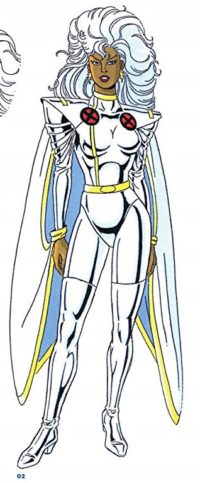
Keep in mind, the first season was more “loosely” based on the comics. In an early episode, Jean refers to her “dark” past, implying that the “Dark Phoenix Saga” had already happened. But that didn’t stop the show’s creators from going ahead and adapting the story later on.
X-Men was not supposed to last beyond 65 episodes, as that was enough for it to be syndicated. FOX did begin airing the show on weekday afternoons, but it was so popular that FOX ordered an extra season.
These final 10 episodes were financed by Saban and were not animated by AKOM. Instead, Saban hired Philippine Animation Studio, and this was pretty much a step backward. Notable changes included new hairstyles for Jubilee and Jean.
The series ended with Xavier headed to space with his beloved Lilandra.
In addition to headlining their own show, the X-Men guest-starred in a two-part episode of the Spider-Man animated series, and Storm went on to guest-star in the three-part Spider-Man event, “Secret Wars.”
X-Men ended in 1997, but the characters wouldn’t stay gone for long. To coincide with the release of the live-action movie, FOX began airing a new series, X-Men: Evolution in 2000, and there have been subsequent animated series featuring the characters.
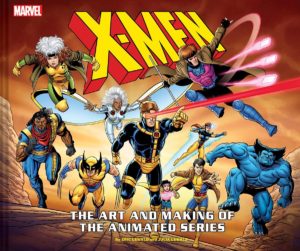
There has been a ton of nostalgia for this particular series, and a book was recently released detailing the creation of this show, X-Men: The Art and Making of the Animated Series. This is actually the second book about the show’s creation.Showrunner Eric Lewald released the book Previously on X-Men: The Making of an Animated Series in 2017.
The entire series is available to stream on Disney+ and there have been RUMORS that Disney+ is exploring the possibility of reviving the show in a new format. In the comics, Marvel published the series X-Men ’92 which carried on in the continuity of the show.
So that’s my look back at X-Men, the cartoon I consider the most IMPORTANT to pop culture in history. Agree? Disagree? Feel free to leave any recollections of your own in the comments and make sure to check back for Saturday Morning Superstars every weekend!



